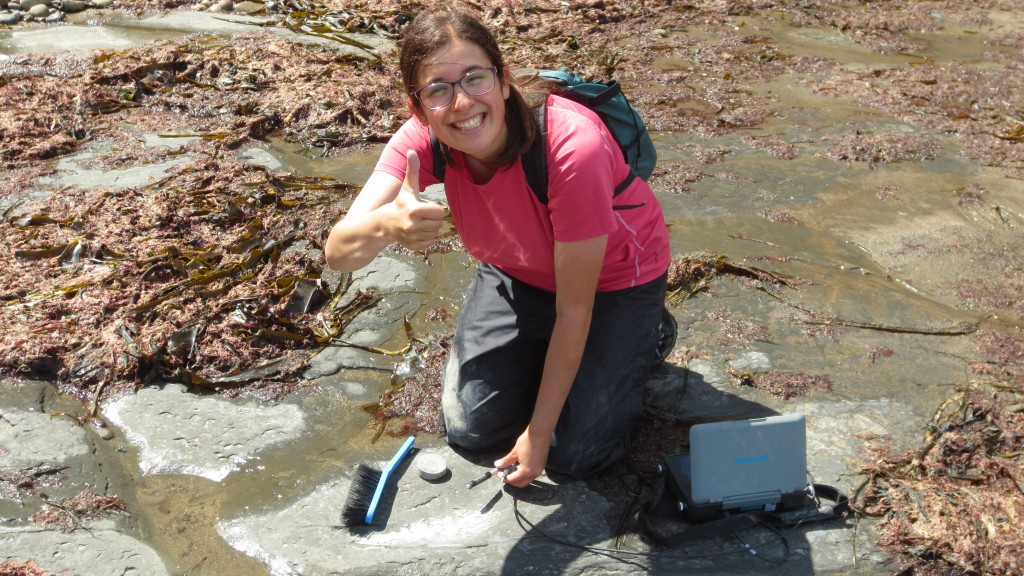Rock tapping, scratching and sweeping…

During the summer I have done lots of fieldwork to figure out how hard the foreshore platform around Boulby and Staithes is and why. Traditionally, rock hardness is measured with a Schmidt Hammer, invented by Ernst Schmidt (1948) to test concrete hardness in situ. I used Equotip durometer, an even less destructive and much lighter device, which has been recently applied in geomorphology.

Despite variable weather, seven days on the Yorkshire coast have been very successful. I managed to get rock hardness results for nearly 300 sites along a 4-km long stretch of coast. At each site I applied similar procedure: acquisition of 10 Equotip readings, removing weathered layer (scratching with carborundum + sweeping) and acquisition of another 10 Equotip readings. Very good exercise! At 50 sites I additionally used Schmidt Hammer in order to be able to calibrate Equotip readings and relate them to previous coastal studies.

The results, which I will present in two weeks at the annual meeting of the British Society for Geomorphology, show an interesting spatial link with geological and environmental settings.
